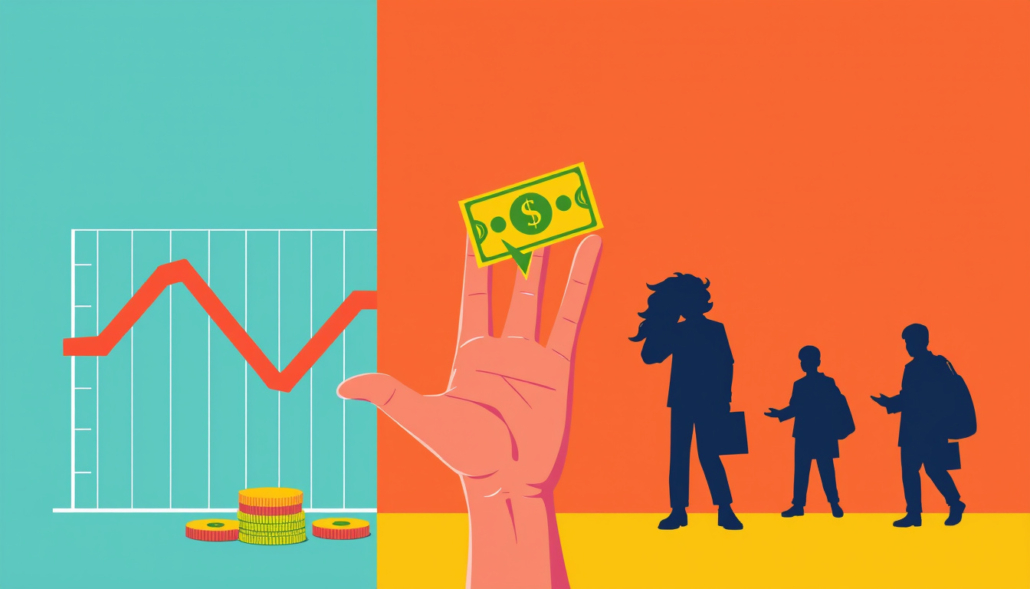Inflation is measured by official numbers like the Consumer Price Index (CPI), but these numbers do not show the daily strain on people. The real cost of inflation mixes with past money policies and the push of the economy. Headline figures do not tell the full story.
The Fed’s Backward-Looking Monetary Policy
The Federal Reserve (Fed) runs its monetary policy by looking at past inflation data. It uses old numbers much like checking a rearview mirror. Money printing, easing measures, and stimulus efforts keep inflation pressure high. The Fed watches CPI numbers and sees inflation as under 2%. It sticks with loose money tactics.
Yet:
- The Fed raises rates too little and too late.
- A 1-2% jump will not tame a 7% inflation rate.
- Getting to a 10% or higher rate is very hard because of the heavy debt from years of cheap money.
This means the Fed must raise rates enough to slow the economy—but they risk stressing bubble assets without cooling inflation well.
Why Official Inflation Figures Underestimate the True Impact
If we used the methods of the early 1980s, the inflation rate might be near 15% instead of 7%. This gap hides the heavy burden on shoppers.
Main points:
- How inflation is measured has changed.
- Some essential goods and services do not have the same weight in the numbers.
- When asset bubbles break, the hit on personal finances is lost in the official count.
Thus, everyday costs like groceries and rent can climb faster than the numbers show, which hurts buying power.
The Dilemma of Assets in a High-Inflation Environment
What to Avoid
- Cash: It seems safe in crashes but loses value fast when prices rise.
- Bonds: They may be riskier because they keep your money for later when it will be worth less.
- Momentum Stocks and Cryptocurrencies: These assets often depend on cheap money. They may drop when money tactics start to tighten a bit.
Where to Invest
Instead, investors should move toward assets with direct value:
- International Value Stocks: Stocks in Europe and Asia from stable companies give steady income with dividend yields near 5-10%.
- Firms with Physical Assets: Businesses that own property, plants, or equipment can cope with rising prices.
- Dividend-Paying Stocks: They provide cash in hand, which helps those who need income now.
Holding these assets protects capital. Companies that own real things can increase prices as inflation goes up and grow their profits and payouts.
The Looming Crisis: Stagflation and Currency Collapse
The current path may lead to stagflation. In this state:
- Prices rise faster.
- The economy stays still or shrinks.
- Small rate increases from the Fed do not stop price hikes.
If the Fed must flip signs and ease policy again despite rising prices, people might lose trust in the dollar. This can start a currency crisis and then a sovereign debt crisis. Interest rates could jump high, and the situation could get worse than the 2008 crash. In a hard case, no bailouts might come.
Uncontrolled money printing might even bring hyperinflation. In that case, the currency falls sharply, harming savers.
Practical Takeaways for Investors and Consumers
- Spread investments across borders to cut the risk of U.S. inflation and debt.
- Buy assets that have clear worth instead of paper investments or high-risk bets.
- Do not hold too much cash or bonds when prices move fast.
- Think about assets that secure income even as prices rise, like dividend stocks.
- Check if the official inflation rate truly matches your rising costs.
FAQs
Q1: Why do official numbers hide real inflation?
A1: The CPI and similar measures now use methods that change how they count items. They shift weights and tools so big rises in prices for housing, healthcare, or energy do not show fully.
Q2: Why can we not see interest rates above inflation today?
A2: Debt has grown steeply during low-rate times and stimulus. Big rate increases would hike debt costs and could push the economy into a sharp decline. This makes large increases both hard and risky.
Q3: What makes holding cash or bonds risky when prices climb?
A3: As prices go up, cash loses its buying power. Bonds pay a fixed amount. When rising prices outpace these payments, money loses value, and your purchasing strength drops.
